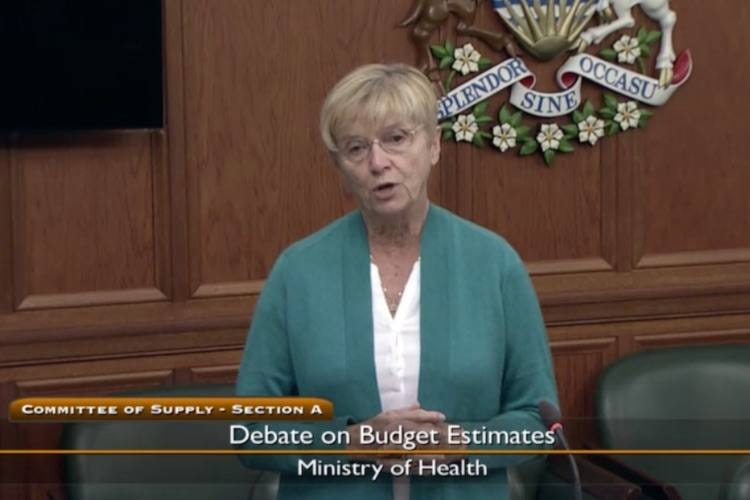During our gloomy winters, the sun sets as early as 4:15 p.m., and the late winter change to daylight saving time is a relief.
Every March, I look forward to brighter, late afternoons. However, adjusting is always a struggle. I slouch around, bleary-eyed for several mornings, slurping extra coffee, and it’s harder to fall asleep for most of a week.
Then I adjust.
An extra hour of sleep the first Sunday in November feels like a consolation prize for putting up with the deluges and wind storms typical of that month.
Moving to standard time for at least those two months of the year, when we have only a scant eight or nine hours of daylight, makes some sense. It repositions daylight hours so the latest the sun rises in the morning is about 8:10 a.m.
READ ALSO: No place for partisan politics in investigating alleged wrongdoing.
However, I am the first to agree that the back-and-forth adjustments to the clock seem archaic. And there are significant downsides. Everything from a rise in Monday morning traffic accidents following the biannual time change to increased heart attacks are reported.
At the same time, other studies draw ambiguous conclusions and some point to a trade-off, citing both negative and positive effects.
For the third year in a row, Boundary-Similkameen Liberal MLA Linda Larson has tabled a private members bill in the B.C. legislature. She has been advocating for an end to the practice of shifting our clocks by an hour twice a year.
The Union of British Columbia Municipalities, which represents local governments, voted in 2017 to request the provincial government consult with citizens on the question of eliminating time changes.
Last year they passed a motion requesting the province of British Columbia “abandon the practice of Daylight Saving Time and implement a single time zone province-wide”.
Three American states — Washington, Oregon and California — share the Pacific time zone with most of British Columbia (a few areas near the Alberta border opted into Mountain time).
In November, Californians voted in favour of Proposition 7, making it the third western state to direct its legislature to seek federal approval to stay on Daylight Saving Time year-round.
B.C. Premier John Horgan responded and announced that his government is considering two choices. The first, to maintain the status quo, and the second, to stay on DST year-round.
The first stage of the process is public consultation. B.C. residents have until July 19 to answer an online survey. Experts and organizations are invited to make formal submissions.
Our modern system for setting time has only been in existence for 135 years.
Sir Sandford Fleming, chief engineer with the Canadian Pacific Railway, invented time zones and in 1884 representatives at the International Meridian Conference in Washington, D.C. agreed to adopt his system.
Prior to that, municipalities in Canada set their own time based on the sun.
Daylight Saving Time was implemented in Canada a century ago in an effort to conserve energy and increase productivity.
In 1945, legislating DST became a provincial responsibility. Just over half of British Columbians voted in favour of DST in a 1952 plebiscite.
Up until 2006, DST began on the first Sunday in April and ended on the last Sunday of October.
In 2007, we aligned with the Americans and expanded DST by five weeks. Now, clocks “spring forward” on the second Sunday in March, and “fall back” on the first Sunday in November.
Getting rid of the twice-yearly fussing with clocks and time by choosing year-round DST is appealing, but consider what our winter mornings would be like.
Between the end of November and the beginning of February, the sun rises within 15 minutes of 8 a.m., and the sun sets between eight and 10 hours later as our hemisphere tilts away from the sun.
Staying on Pacific Daylight Time might give us more light during the afternoon commute, but our mornings will be darker.
If we do not switch back to standard time this November, sunrise will occur after 8:30 a.m. for 10 weeks in the heart of winter. And for 11 days at the end of December and beginning of January, sunrise will be as late as 9:07 a.m.
In an effort to save energy, our neighbours south-of-the-border tried permanent DST for 16 months during the early ’70s. They returned to standard time during the winter mainly because of concerns about children going to school in the dark.
This could be mitigated by starting school 30 minutes to an hour later in the morning. Teenagers, in particular, benefit from a later start time.
Balancing the school calendar is a positive option both for learning and safety. A four-week break at Christmas, similar to Kanaka Creek elementary’s calendar, avoids a month of dark commutes to school and helps address learning-loss by reducing the long summer break.
Take some time over the next couple of weeks to consider how and when we set our clocks, and add your voice to the provincial consultation.
You likely won’t have another chance.
The government plans to make a decision this fall.
Katherine Wagner is a member of the Citizens’ Task Force on
Transparency, a former
school trustee and member of
Golden Ears Writers.
